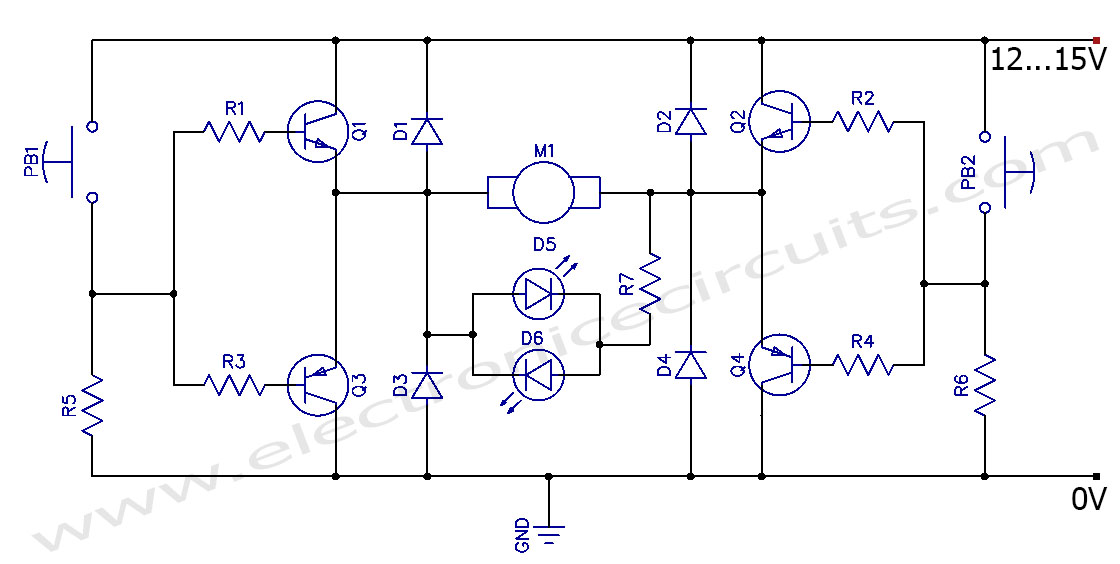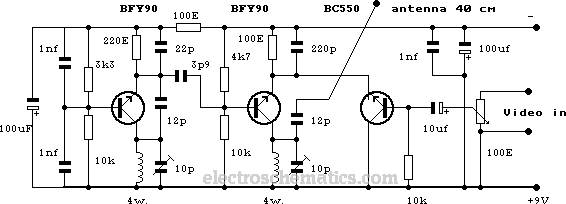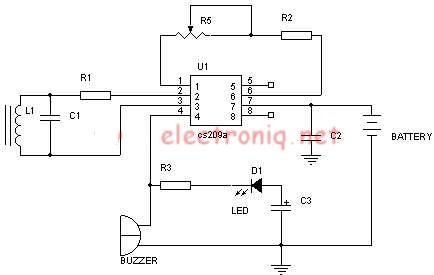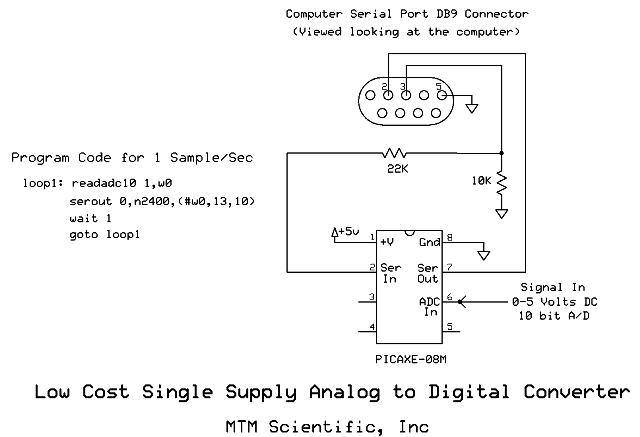
1Hz Oscillator circuit
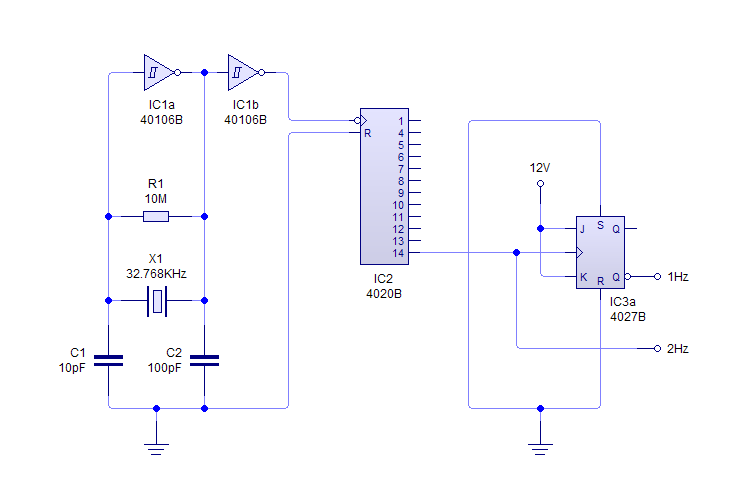
This plugin utilizes a quartz oscillator featuring a crystal (X1) to produce a 32,768 Hz (32,768 = 2^15) output. This frequency is fed into a 4020 14-Stage Ripple Counter, which divides the signal by 2^14, resulting in a 2 Hz output. The 2 Hz signal is subsequently halved using a JK flip-flop (4027) configured as a toggle flip-flop, generating the 1 Hz output. Both the 1 Hz and 2 Hz signals are available as outputs; the 2 Hz signal is particularly useful for clocking circuits at a visible speed without being excessively slow. The plugin's stripboard layout measures 12x23 holes. An LED and a current-limiting resistor have been incorporated into the 1 Hz output to serve as a visual indicator, although this component can be omitted without impacting circuit performance. Component R2 may need to be positioned around diode D1 due to limited space. The provided parts list is based on a 9V power supply; if a different voltage is used, adjustments to the LED current-limiting resistor (R2) and the oscillator may be necessary.
The circuit begins with a quartz crystal oscillator, which is a crucial element in generating precise frequency signals. The crystal oscillator operates at 32,768 Hz, a frequency commonly used in timekeeping applications due to its binary nature (2^15). This output is fed into a 14-stage ripple counter, specifically the 4020 IC, which effectively divides the input frequency by 16, resulting in a 2 Hz output.
To further refine the frequency, the 2 Hz signal is processed by a JK flip-flop, such as the 4027, which is configured in toggle mode. This configuration allows the flip-flop to divide the frequency by 2 again, yielding a stable 1 Hz output. The dual output capabilities of 1 Hz and 2 Hz provide flexibility for various applications, including digital clocks and timing circuits, where the 2 Hz signal can be utilized for visual indicators or other timing needs.
The physical layout of the circuit is designed for a stripboard with dimensions of 12x23 holes, which facilitates compact assembly and easy integration into various projects. The inclusion of an LED at the 1 Hz output serves as a user-friendly feature, providing a visual cue of the circuit's operation. The current-limiting resistor (R2) is essential to prevent excessive current from damaging the LED, and its placement may require careful consideration due to spatial constraints near the diode (D1).
For optimal performance, the circuit is designed to operate with a 9V power supply. If alternative voltage levels are employed, it is advisable to reassess the specifications of the current-limiting resistor and potentially recalibrate the oscillator to ensure consistent functionality. This circuit exemplifies a straightforward yet effective design for generating accurate timing signals suitable for a variety of electronic applications.This plugin uses a quartz oscillator which uses a crystal (X1), amongst other components to give a 32, 768Hz (32, 768=215) output. This is input to a 4020 14-Stage Ripple Counter, which divides this signal down by 214 to a 2Hz signal.
This 2Hz signal is then halved in frequency using a JK flip-flop ( 4027 ) configured as a toggle flip-flop. The outp ut from this is used as the 1Hz signal. Both the 1Hz and 2Hz signals are taken as outputs, as the faster 2Hz signal is sometimes useful for clocking circuits at a visible speed, without going too slowly. Below is the stripboard layout for the plugin. The dimensions of the stripboard are 12x23 holes. An LED and current-limiting resistor have been added to the 1Hz output to provide a visual indicator.
This can be omitted without affecting the performance of the the circuit. R2 may need to be mounted around D1, as there is very little space for it. The parts lift below assumes a power supply of 9V. If a different voltage is used, it is possible that the LED current-limiting resistor (R2) must be changed and the oscillator may need adjustment as well. 🔗 External reference
The circuit begins with a quartz crystal oscillator, which is a crucial element in generating precise frequency signals. The crystal oscillator operates at 32,768 Hz, a frequency commonly used in timekeeping applications due to its binary nature (2^15). This output is fed into a 14-stage ripple counter, specifically the 4020 IC, which effectively divides the input frequency by 16, resulting in a 2 Hz output.
To further refine the frequency, the 2 Hz signal is processed by a JK flip-flop, such as the 4027, which is configured in toggle mode. This configuration allows the flip-flop to divide the frequency by 2 again, yielding a stable 1 Hz output. The dual output capabilities of 1 Hz and 2 Hz provide flexibility for various applications, including digital clocks and timing circuits, where the 2 Hz signal can be utilized for visual indicators or other timing needs.
The physical layout of the circuit is designed for a stripboard with dimensions of 12x23 holes, which facilitates compact assembly and easy integration into various projects. The inclusion of an LED at the 1 Hz output serves as a user-friendly feature, providing a visual cue of the circuit's operation. The current-limiting resistor (R2) is essential to prevent excessive current from damaging the LED, and its placement may require careful consideration due to spatial constraints near the diode (D1).
For optimal performance, the circuit is designed to operate with a 9V power supply. If alternative voltage levels are employed, it is advisable to reassess the specifications of the current-limiting resistor and potentially recalibrate the oscillator to ensure consistent functionality. This circuit exemplifies a straightforward yet effective design for generating accurate timing signals suitable for a variety of electronic applications.This plugin uses a quartz oscillator which uses a crystal (X1), amongst other components to give a 32, 768Hz (32, 768=215) output. This is input to a 4020 14-Stage Ripple Counter, which divides this signal down by 214 to a 2Hz signal.
This 2Hz signal is then halved in frequency using a JK flip-flop ( 4027 ) configured as a toggle flip-flop. The outp ut from this is used as the 1Hz signal. Both the 1Hz and 2Hz signals are taken as outputs, as the faster 2Hz signal is sometimes useful for clocking circuits at a visible speed, without going too slowly. Below is the stripboard layout for the plugin. The dimensions of the stripboard are 12x23 holes. An LED and current-limiting resistor have been added to the 1Hz output to provide a visual indicator.
This can be omitted without affecting the performance of the the circuit. R2 may need to be mounted around D1, as there is very little space for it. The parts lift below assumes a power supply of 9V. If a different voltage is used, it is possible that the LED current-limiting resistor (R2) must be changed and the oscillator may need adjustment as well. 🔗 External reference

